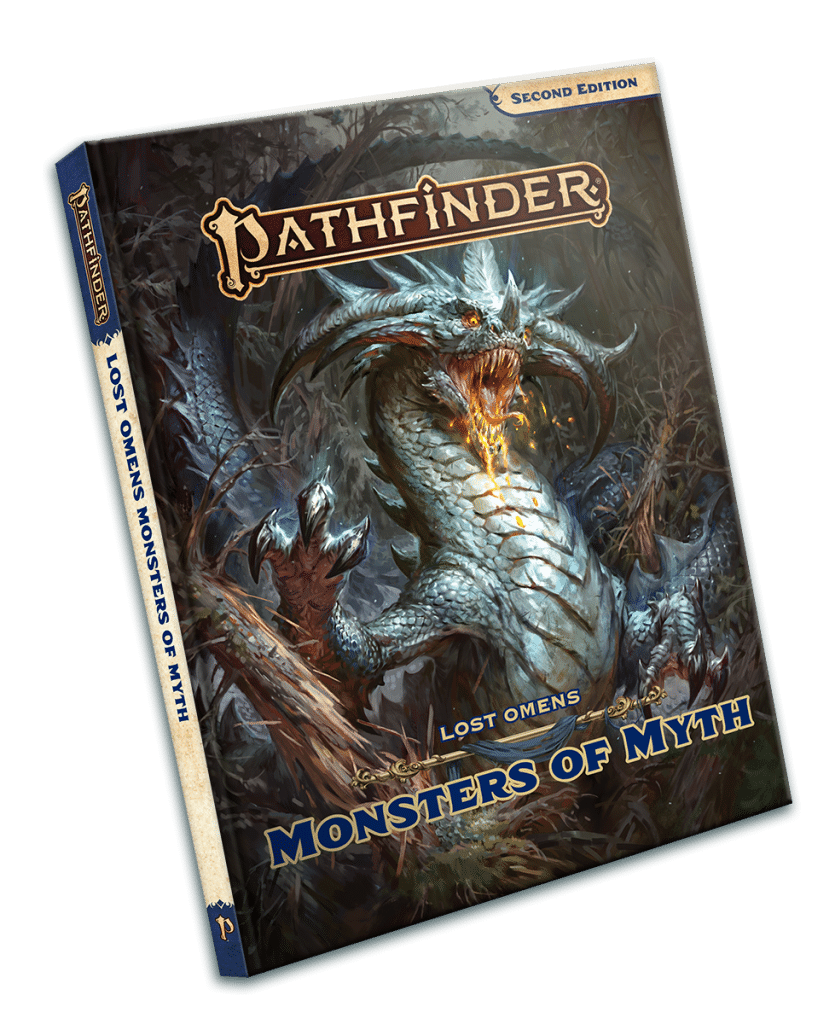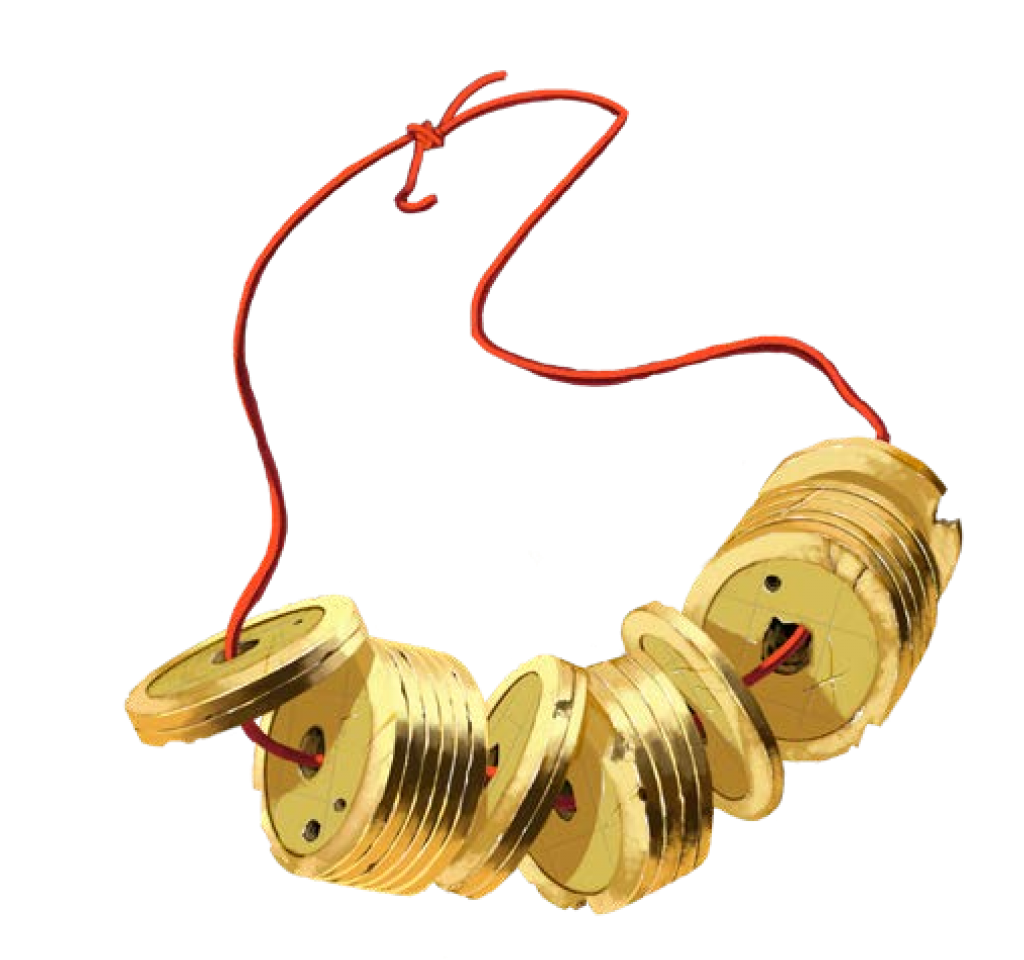Lost Omens: Monsters of Myth serves as a worthy accompaniment to Lost Omens: Legends for Pathfinder Second Edition (PF2). Whereas the Legends entry emphasizes important and notable figures in Golarion history, Monster of Myth adds in well-known creatures that have an impact on the many cultures therein.
Monsters of Myth is the shortest Lost Omens entry thus far. Within its pages, you’ll find details on 20 creatures ranging from fey, to beasts, to dragons. Now don’t get it twisted; despite this being a shorter entry, I would rank this up there with my favorite Lost Omens books.
If you’re interested in my thoughts on the other Lost Omens books, you can check out this singular link that shows the Lost Omens reviews in one place. It’s a one-stop-shop!
Let’s get into the details of the book!
![]() Lost Omens Monsters of Myth: Who It’s For
Lost Omens Monsters of Myth: Who It’s For
Lost Omens: Monsters of Myth is designed for lore-lovers and world-builders. This doesn’t necessarily mean that it’s exclusively for Gamemasters. In fact, I know many players who spend just as much time designing their own homebrew worlds and stories as I do!
Each monster entry is six pages, and details out the lore associated with the creature. Most of the monsters, like Desert’s Howl, are mythologic in nature. That is to say, it is rare for people to come across them unless they’re explicitly looking for them and putting together the pieces to their location. You also get a statblock for the creature, along with information on any items they might be carrying.
My favorite part of the book is something that EVERY book should have if it’s a Gamemaster resource. There is a section called ‘In Your Campaigns’, and it outlines the uses for the monster regardless of where your party is within its adventure. The section is separated into Low-Level Campaigns (1-7), Mid-Level Campaigns (8-14), and High-Level Campaigns (15-20).
Many of entries have other statblocks that can be used at these different levels. For example, in the case of Desert’s Howl, there are howling spawn that would be more suitable to a mid-level party. It’s always tough to envision how you could bring some of these monsters into lower-level games, and there are plenty of options sprinkled throughout each entry. For the Desert Howl, the party could encounter people plagued with nightmares caused by the Howl, or maybe it causes hallucinations of other powerful creatures. It’s just such a nice feature! I don’t have to perform as many mental gymnastics to figure out how I’m going to get my party introduced to this cool thing!
And everybody likes cool things!
Fans of mythology in general will really appreciate this book, as many (all?) of these creatures share real-world analogs that you might be familiar with. For example, you have the winter holiday monster, Krampus. Even though Krampus is featured in Bestiary 3, there is a lot of lore and background that you can dive into with this well-known monster. I don’t recommend watching the movie of his namesake, but that’s a discussion for another time.
All in all, the true intended audience for Lost Omens: Monsters of Myth is the Gamemaster scene. Whereas some of the other Lost Omens books have content that players could dig into, this one is really too consolidated to have much that people creating player-characters would care about.
![]() Lost Omens Monsters of Myth: The Best Parts
Lost Omens Monsters of Myth: The Best Parts
Now let’s take a look at my top three takeaways from Lost Omens: Monsters of Myth for Pathfinder Second edition. These are things that caught my eye when reading through the book, and the things I’m most excited to bring to the table.
Desert’s Howl
I’ve already talked about Desert’s Howl a lot, but that’s because this monster immediately drew me in. I recently ran my players through a homebrew desert adventure and this monster would have been perfect for it. I love creatures that draw from madness mechanics, the unknown, and treasure-filled adventures.
There’s an interesting item, Jalari’s Coded Necklace, that would be the perfect premise for a high-stakes treasure hunt. It allegedly points the way to several treasure caches that Jalari Zafikiri stowed away during the course of his life. Supposedly, finding the lair of the Desert’s Howl might also give insight into this illustrious trove of goodies.
Another thing I really appreciate is alluding to high-level monsters, even if the PCs would never truly encounter them naturally. Desert’s Howl causes nightmares and terrible dreams in the surrounding area, which is good pretense for an afflicted town that the PCs enter. Many towns should have at least one hook, and Desert’s Howl is a very good one.
Sandpoint Devil
Ah, the Sandpoint Devil! This monster is alluded to in the first Pathfinder Adventure Path, Rise of the Runelords. One of my players was a monster hunter whose life goal was to seek out this beast and defeat it. As with most myths, the first step would be to actually prove its existence!
At the end of the day, the party was soooo close to encountering the Sandpoint Devil, but ultimately went left when they should have gone right. I guess Barnaby’s priorities changed over the course of the adventure. Hunting trips didn’t have as much appeal as, you know, saving the world.
The interesting part about the Sandpoint Devil in this book is that it’s one of the lower-level monsters. Even so, there are mid-level and high-level recommendations related to the fallout of the Sandpoint Devil’s demise. I’m talking about an entire CAMPAIGN that you could make from Level 1 to Level 20, strictly tied to this devilishly majestic mare. It involves a cult, spectres, and a monstrosity hell-bent on awakening into the world!
Tehialai
Who doesn’t want to have an adventure featuring a giant crustacean? Tehialai is known as the Thief of Ships, because they repurpose boats as their shell. As Tehialai grows, their shells gets larger and larger, requiring bigger ships and detritus while discarding the ones they’ve outgrown.
That being said, Tehialai isn’t some nefarious beast that needs to be slain. The legendary Okaiyan navigator Kolea the Wanderer learned much from Tehialai. Perhaps your party could do the same? A nautical-themed adventure could feature Tehialai as a recurring guide and character, growing alongside the party.
Tehialai offers a lot of creative freedom for a Pathfinder gamemaster. Will the party’s ship be attacked by the creature, who is just looking for a larger ship to call home? Could Tehialai be called upon to aid a group against pirates or marauders? Beyond that, the art for Tehialai is amazing.
Lost Omens Monsters of Myth: Parting Thoughts
The best part of Lost Omens: Monsters of Myth is that it’s formatted in a way that makes it easily consumable across multiple sittings. If you can take the time to read six pages, you can finish reading about a single monster. I like to use books like this by flipping to a random entry and seeing what I can learn!
The myths are real, and so are the monsters!
You can pick up your copy of the Lost Omens: Monsters of Myth directly from Paizo, on Amazon, or better yet, your FLGS.
[Disclosure: Nerds on Earth was provided a copy of the Lost Omens: Monsters of Myth from Paizo in exchange for an honest review.]



